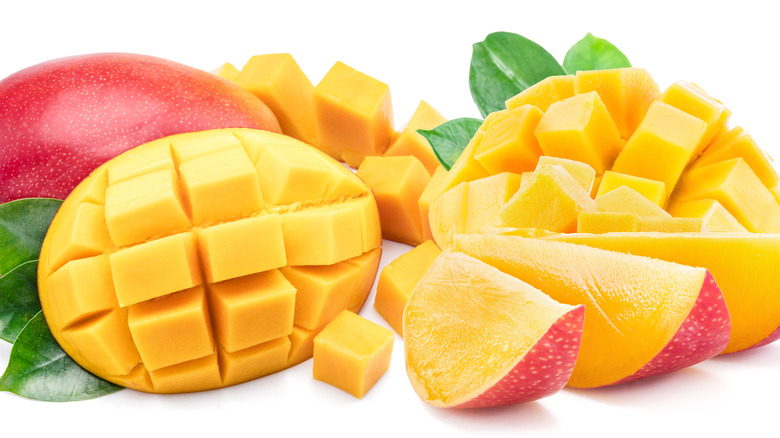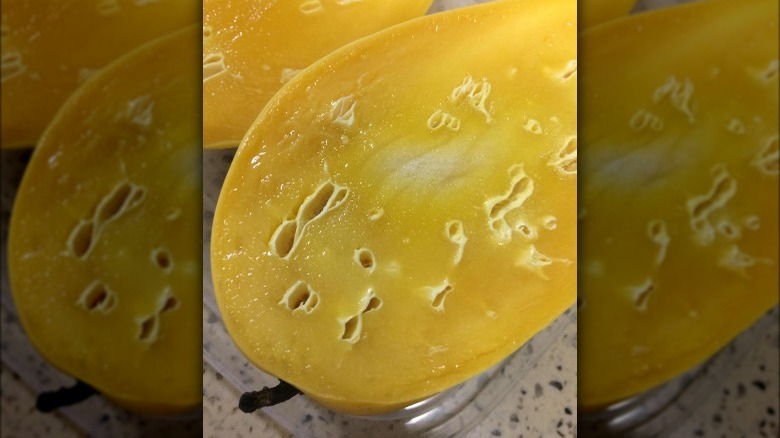What Are The White Spots Inside A Mango?
Among the top 10 most popular fruits in the United States, you will find strawberries, bananas, green grapes, pineapples, red grapes, watermelons, blueberries, tangerines, lemons, and clementines (via YouGovAmerica). If you venture a little further down the list, you'll find mangoes, and although this tropical fruit isn't the most favored in America, it is extremely popular in India and Southeast Asia (per Healthline). According to ISHS Acta Horticulturae, India actually produces approximately 15 million mangoes each year and has around 1,300 different types of mangoes.
Mangoes offer a lot of health benefits, too. According to Healthline, fresh mangoes are low in calories. They may support a healthy heart, immune system, eyes, and gut and could even reduce the risk of certain cancers. Plus, they contain vitamins A, B6, C, E, and K. Now imagine you cut open a fresh mango hoping to reap all those benefits, and, to your surprise, you find white spots all over the mango's flesh. What caused this, and is it a sign your mango has gone bad?
White spots in a mango are a result of heat exposure
If you are bothered by the white spots in a mango, know that they come from attempts to prevent something even worse: fruit fly infestations. Female fruit flies lay eggs in the mango's flesh, and when they hatch, the maggots eat the fruit from the inside out. According to a 2015 report by The Hindu, damage from fruit flies resulted in about 27% of India's mangoes being discarded each year. When harvesting mangoes, it's recommended to soak them in water that's about 118 degrees Fahrenheit (48 degrees Celsius) for at least one hour to eliminate fruit flies and their larvae. (Foods Guy lists the temperature as 115 degrees.) While this process is effective at killing the flies, it may cause another issue in immature mangoes: white spots.
According to Foods Guy, the hot water accelerates the metabolism of immature mangoes, which traps carbon dioxide in the mango's flesh. The gas creates air pockets that look like white spots. Mangoes with white spots are safe to eat, despite their offputting appearance. The only notable difference may be the mango's texture, and its flavor may be less pronounced since it was harvested prematurely. Next time you want to cut into this tropical fruit, try this mango cutting hack.

